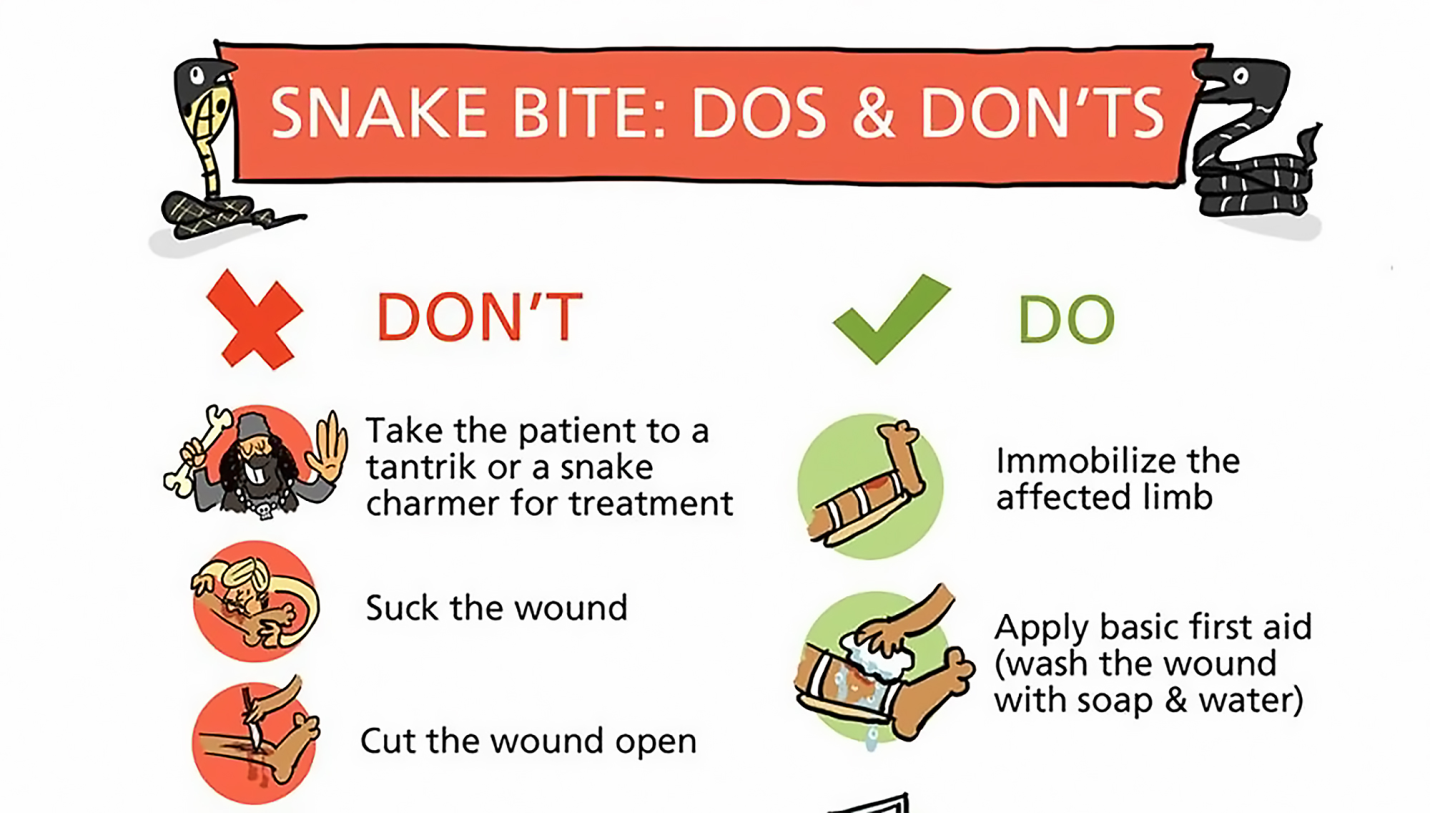





Copyright infringement not intended
Picture Courtesy: https://www.offgridweb.com/preparation/infographic-snake-bite-first-aid/
Context: Scientists at the Indian Institute of Science (IISc) developed a synthetic human antibody that neutralizes toxins from various venomous snakes like cobra, krait, and black mamba.
Key Highlights
|
Aspect |
Details |
Key Points |
|
Snakebites: |
Snakebites, especially from Elapid snakes (cobra, krait, etc.), cause thousands of deaths annually, particularly in India and sub-Saharan Africa. |
Highlights the need for more effective and accessible antidotes. |
|
Current Solution: |
Traditional antivenom involves injecting venom into horses, collecting antibodies from their blood, and purifying them. |
Issues include limited availability, high cost, potential allergic reactions, and the presence of non-venom antibodies. |
|
IISc Innovation: |
Developed a synthetic human antibody that neutralizes a key neurotoxin (3FTx) found in Elapid venom. |
This approach bypasses animals, reduces production time and cost, and ensures human compatibility. |
|
Key Features: |
Targets a conserved region in 3FTx, providing broad protection against various Elapid snakes. |
Achieved 99% binding success with 149 known 3FTx variants. |
|
Advantages: |
More effective: Showed 15 times higher efficacy than conventional antivenom in animal models. |
Faster acting: Neutralized venom even when injected after a time delay (unlike traditional antivenom). |
|
Future Steps: |
Further testing in larger animals and clinical trials. |
Optimization for large-scale production and distribution. |
Must Read Articles:
SNAKE VENOM: https://www.iasgyan.in/daily-current-affairs/snake-venom
|
PRACTICE QUESTION Q. A researcher identifies a conserved region in a snake venom toxin that exhibits high binding affinity to a synthetic human antibody. This finding suggests that the antibody could potentially offer protection against: A) Only the specific snake species from which the toxin was isolated. B) Only snakes within the same genus as the source species. C) A wide range of snakes within the same family as the source species. D) All venomous snakes, regardless of family or species. Answer: C Explanation: While the antibody might not neutralize all snake venoms, targeting a conserved region within a family-specific toxin increases its potential for broad protection against snakes within that family (option C). |






© 2026 iasgyan. All right reserved